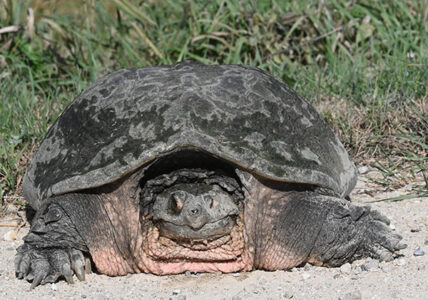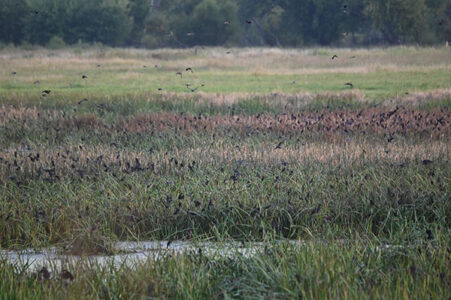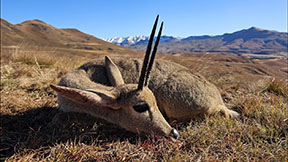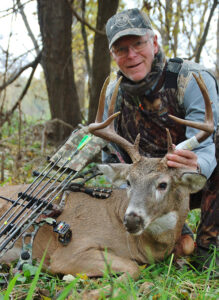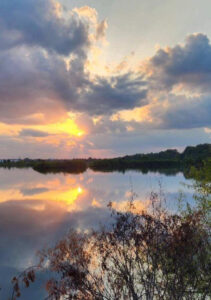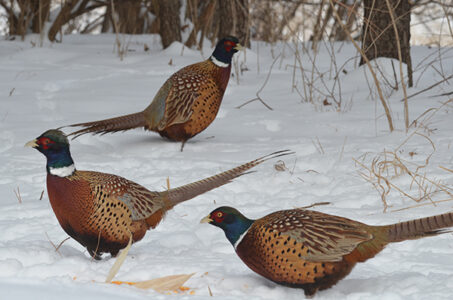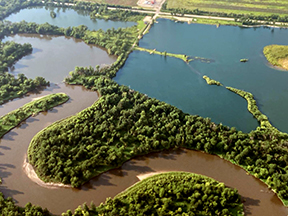Why did the turtle cross the road?
SNAPPING TURTLES are a common reptile in Iowa. Their scientific name is Chelydrda serpentina.
Adults have a big head, a long spiked tail and a nasty disposition to defend itself from all takers. The potentially damaging part of a snapper’s head is its strong jaws, lightning fast ability to extend its head by quite a long way because of a flexible spine. Those clamping jaws are tipped by a beak-like shape of the upper mandible, all excellently engaged to thrust forward to catch frogs or fish.
A long time ago at the Green Castle Recreation Area, I visited with a fisherman. His fishing license was in order. Good.
And I noted he had one-half of a finger missing. He said that the missing digit was from a snapping turtle encounter long ago. The snapper had taken his catfish bait and was hooked very well.
After much persuasion and careful pulling, he brought the turtle to shore. Its head was tucked in tight but the hook was nicely visible along its jaw.
According to this fisherman, his big mistake was attempting to release the hook without a pair of pliers. As he reached close to grasp the hook, the turtle’s lightning fast reflexes thrust out its neck and open jaws grabbed a finger.
His mangled finger tissue was not fixable. That fisherman’s story was why he had only nine and one-half fingers. Beware of snapper power.
Snappers are strong muscled aquatic reptiles. They have a top shell, called a carapace, that is a unique blend of internally flattened ribs which support the outer dark colored surface shell. At the rear edges of the top shell are many jagged projections.
Three rows of bumpy spines run front to back along the top. Its bottom shell is diamond shaped which allows for ample leg movement. It is light tan to yellowish colored.
All exposed leg tissue is tough leathery skin with many bumpy wart-like bumps. At the end of each foot are long and strong claws for traction and digging needs. If the turtle is turned upside down, it will extend its legs to find a grip and turn itself upright, a seemingly easy maneuver for this big beast of a reptile.
Snappers inhabit ponds, marshes, lakes and rivers. They may be one of the first critters to move into a newly built farm pond.
One habit of feeding behavior is to seek out swimming waterfowl on the surface by a careful and slow approach from below, grabbing the bird to drag it down, drown it, and of course eat it. It is a natural predator/prey relationship of Mother Nature’s intricate life web.
Other foods include carrion, fish and sometimes swimming small mammals. An adult snapper may reach 40 pounds, sometimes more. Snapper population estimates continue to classify them as not threatened.
Turtles of all types have a long history of survival. Their origins can be traced back to other amphibians in the Paleozoic era, some 300 million years ago. They were a dominant large animal of the world during the Mesozoic era, also referred to as the Age of Reptiles.
Huge turtle skeletons may now be found in many natural history museums of the world. Some lived in salt water. Others were adapted to brackish or fresh water environments.
Iowa has the following turtle species: Ornate box turtle, which is on the threatened species list. Next is the Painted turtle, with adults about five inches long. Red-eared turtles live in far southeast Iowa near the Mississippi River.
Map turtles also prefer habitats along the entire Mississippi River border. There is even a False Map turtle. Blanding’s turtles have a restricted range in north-central Iowa.
The Alligator snapping turtle is the biggest that may be found in far southeast Iowa near the Mississippi River. Specimens over 200 pounds have been recorded but most are in the 35 to 70 pound range. Yellow mud turtles have limited range in southeast Iowa.
Stinkpot turtles may be found along the Mississippi River. Other turtles are the Wood turtle, Spiny softshell, and smooth softshell.
——–
PHEASANTS FOREVER chapter banquet is coming up soon on Nov. 1, 2025 for the Marshall/Tama gathering. The banquet site will be held at Midnight Garden, 1501 S. 17th Ave. in Marshalltown.
Doors open at 4 p.m. with food service provided by Smokin G’s. For ticket information, you may go to this website — marshall.tama.pf@gmail.com or call 641-861-1015.
This banquet is always well attended by family groups. Games will be available. Silent auction lists will be offered to write your bid number on.
A live auction will also be held to help raise funds for conservation projects in the local area. Come enjoy meeting old friends and make new friends. Enjoy a great meal.
Pheasant numbers in central Iowa are at good levels. Crop harvests are going well, so it will not be long before sightings of rooster pheasants will become a bit easier.
In my back road travels lately, I have been surprised and happy to see random flights of roosters out of road ditches as the birds cruise into nearby unpicked corn. I have also listened to pheasant crow calls while sitting quietly in my tree stand.
Bird calls of many species are a nice gift from Mother Nature whenever my camo covered form is waiting for passing deer. Being outside during the fall season is a terrific time to explore or just enjoy special moments in nature.
——–
TROUT will be coming to Sand Lake on Oct. 29 at approximately noon time. This is an annual event whereby the DNR Fisheries staff bring trout to many select water areas that are not normally thought of as trout havens.
Northeast Iowa cold water streams have trout naturally or via stocking. Inland waters, however, need to be stocked. It is part of a community trout stocking program.
Each one of the 18 sites will be hosting anywhere from 1,000 to 2,000 rainbow trout. Water temperatures in the ponds or old sand pits will have cooled to proper temperatures for trout. This is always a good time for kids to go fishing. A small hook with a night crawler or corn kernel bait will work. Spinners such as panther martin or Mepps are all you will need.
Anglers need to have paid the trout fee on the fishing license to possess or fish for trout. A daily limit of five per angler is set.
The possession limit is 10 trout. Kids age 15 or less can fish for trout with a properly licensed adult, but they must limit their catch to one daily limit.
——–
CONSERVATION efforts of good land management, whether public or private, entails lots of stakeholders. All have priorities and interests.
Working together is imperative if the long term health of our soils, waters and other natural resources are to be maintained and enhanced. Land uses change over time.
Human needs seem to adapt and change also. What is needed is a vision that is long term for everyone of every interest level, consumptive or non-consumptive.
Hunters and fishermen may be typically thought of as the consumers, all within science based limits of take so as to maintain base level populations.
For these privileges, those participants pay handsomely for gear and licenses. That fact is a major component. Other consumers of natural resources may have more indirect influences. Yet they also “consume” in some ways even if they never draw a bow, pull a trigger on game birds, or throw a fly line or lure. Partnerships that blend all those aspirations is where the future of conservation will come from. Finding common interests for land and unique habitats will be key.
Everyone must be thought of as caretakers, stewards and stakeholders for future generations. Support for conservation programs and projects involves lots of people from all walks of life. Together, greater conservation goals can be achieved.
——–
Quote to note: “One touch of Nature makes the whole world kin.”
— William Shakespeare
——–
Garry Brandenburg is the retired director of the Marshall County Conservation Board. He is a graduate of Iowa State University with a BS degree in Fish & Wildlife Biology.
Contact him at:
P.O. Box 96
Albion, IA 50005
- PHOTOS BY GARRY BRANDENBURG — Fall season is an exciting time. Cooler air is welcome. Shorter days are becoming evident. Some tree leaves are beginning to show new colors. Birds are grouping up for resting and feeding prior to migration. And even snapping turtles are seeking out wetlands or nearby farm pond water sources to hunt for prey before icy conditions of winter set in. They may be crossing roadways just to get to the other side where water awaits. Another reason for turtles to find wetland sites is soft muddy bottoms where they can dig deeply below the ice to wait out another winter. Today’s snapping turtle was discovered along the shoulder of a county gravel road. It was huge! I helped it get to the other side of the road to prevent it from being struck by a vehicle. Mission accomplished. As for today’s image of thousands of birds gathered at the Mann Wetland Area near Albion. It was a huge flock containing Red-winged blackbirds, starlings, some swallows and lots of grackles. The next day they were gone.

